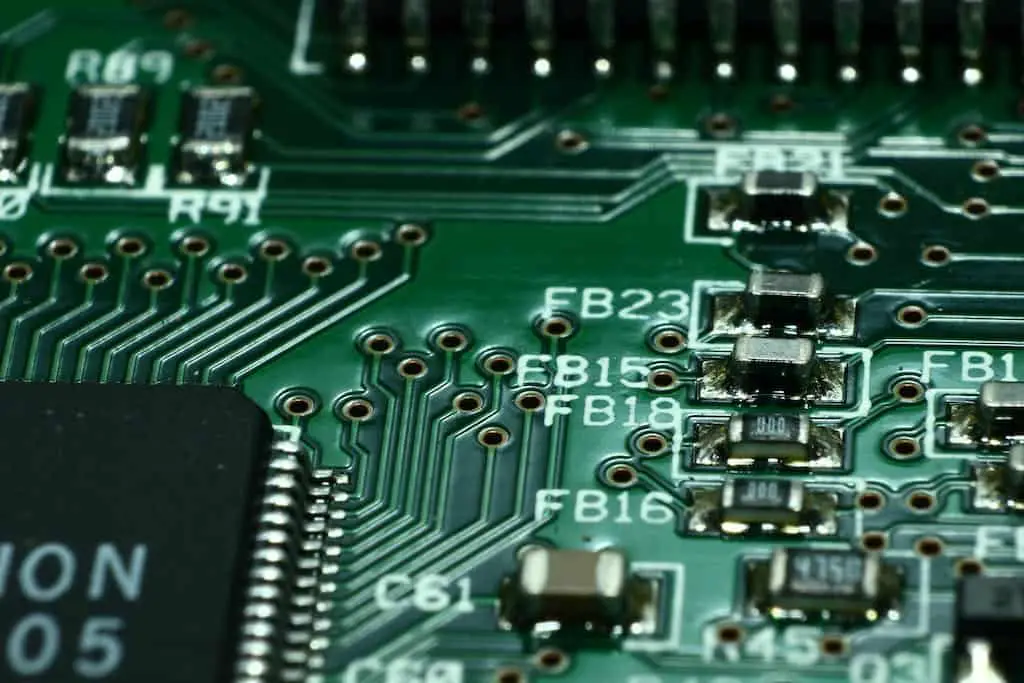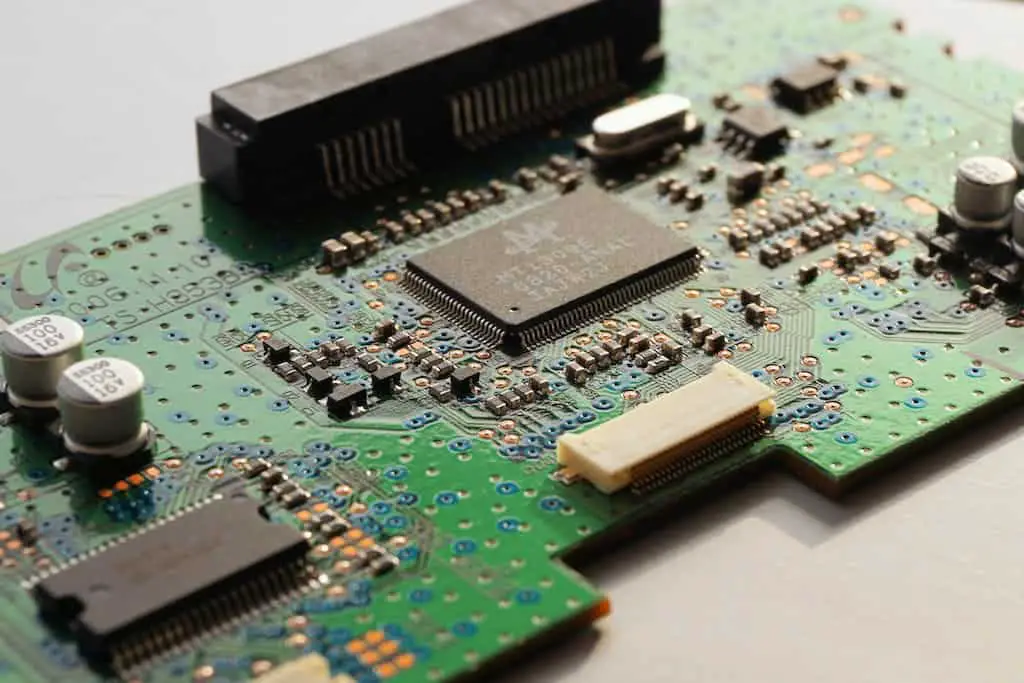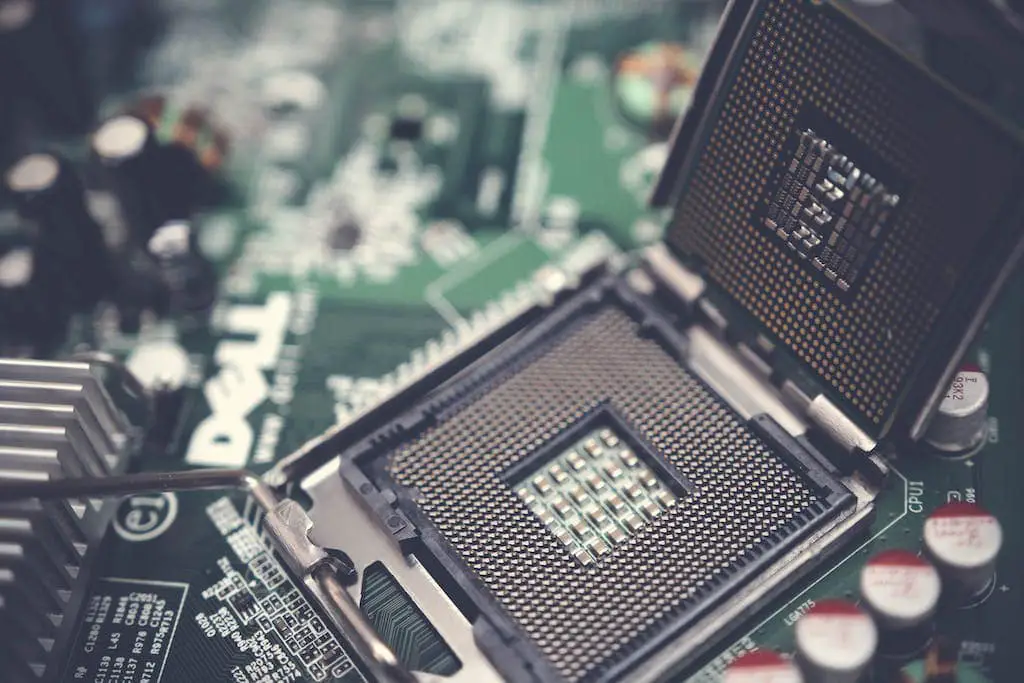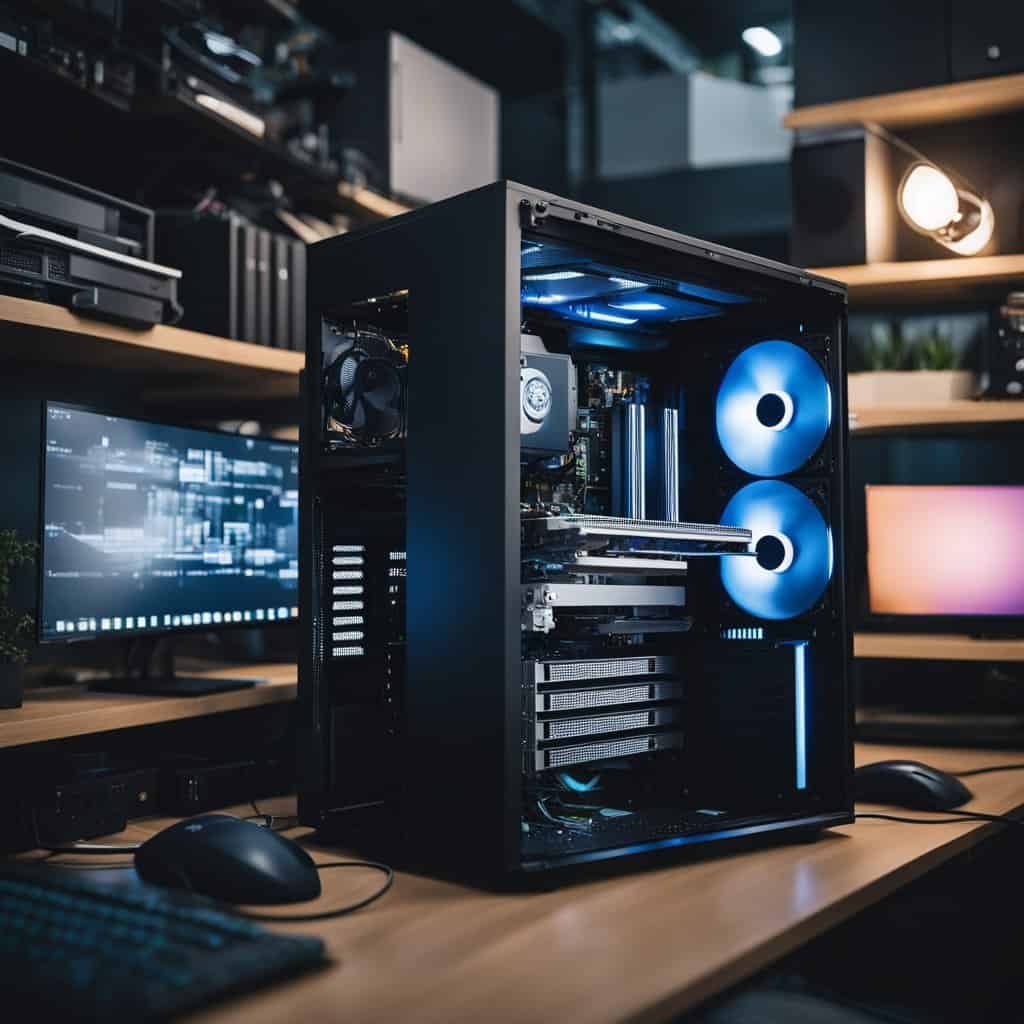Are you considering building your own PC but feeling overwhelmed by the variety of motherboard and computer case options available? Understanding the compatibility between motherboards and computer cases is essential for a successful build.
In this article, we will explore the different types of motherboards and computer cases, the factors that determine their compatibility, and provide you with a step-by-step guide on how to determine if a motherboard will fit in a computer case and how to install it. Whether you’re a beginner or an experienced builder, this article will help you navigate the world of PC building with confidence.
.jpg)
Key Takeaways:
Not all motherboards and computer cases are compatible with each other due to different form factors and sizes.Important factors to consider for compatibility include form factor, size, mounting holes, front panel connectors, expansion slots, power supply, and cooling system.Before purchasing a motherboard or computer case, it is important to research and ensure compatibility to avoid any installation issues.
What Is a Motherboard?
A motherboard is a crucial component of any computer build, serving as the main circuit board that connects various components, including the CPU, graphics card, and other essential hardware, allowing them to communicate and function cohesively.
A computer’s hardware components rely on a motherboard to efficiently interact and operate. This crucial piece of hardware also contains the BIOS, which is responsible for loading the operating system and initializing the computer during startup. Furthermore, motherboards greatly influence the compatibility and performance of a system, as they determine which processors, memory, and expansion cards can be used.
What Is a Computer Case?
A computer case, often referred to as a PC case, is an enclosure that houses the various components of a computer, providing protection, cooling, and aesthetic appeal to the build.
Computer cases play a crucial role in protecting delicate hardware components from dust, debris, and accidental damage. They are designed with proper ventilation and cooling systems to maintain optimal operating temperatures for the internal parts, ensuring longevity and performance.
Proper airflow management is essential for efficient heat dissipation. Modern cases come equipped with multiple fan mounts, liquid cooling support, and efficient cable management solutions to help with this.
What Are the Different Types of Motherboards and Computer Cases?
Motherboards and computer cases come in various types and sizes, with popular options including ATX, Micro-ATX, and Mini-ITX, each catering to different build requirements and form factors.
ATX Motherboard and Case
An ATX motherboard and case are designed to accommodate full-sized builds, offering ample space for components and enhanced compatibility with a wide range of hardware configurations.
One of the key advantages of ATX motherboards and cases is their spacious layout. This allows for easy installation of various components, such as multiple graphics cards, storage drives, and cooling solutions. The generous room for expansion not only provides flexibility in customizing your system but also facilitates efficient airflow. This contributes to improved thermal performance.
Along with their size, ATX motherboards and cases boast extensive compatibility with diverse hardware. This includes the latest processors, memory modules, and expansion cards. This versatility ensures that users can construct powerful and versatile systems without constraints, catering to a wide array of computing needs.
Micro-ATX Motherboard and Case
A Micro-ATX motherboard and case offer a more compact form factor compared to ATX, providing a balance between space-saving design and compatibility with essential components for efficient builds.
One of the key advantages of a Micro-ATX motherboard and case is their smaller size. This makes them a great option for smaller computer builds where space is limited. Despite their compact form factor, they still offer compatibility with essential components like processors, memory, and storage devices. This ensures that you can create a powerful and efficient system without sacrificing performance. Additionally, their smaller size can lead to improved airflow and cooling, as the limited interior space promotes efficient heat dissipation.

Mini-ITX Motherboard and Case
Mini-ITX motherboards and cases are renowned for their ultra-compact size, making them suitable for small form factor builds while maintaining compatibility with essential components, offering a balance between space efficiency and performance.
These Mini-ITX components are ideal for creating sleek and highly functional systems, whether for gaming, multimedia, or professional use. Despite their small size, they often support powerful processors and high-speed memory, enabling impressive performance in a compact package.
The compact nature of Mini-ITX setups opens up possibilities for creative and space-saving designs, perfect for those seeking a stylish and efficient computing solution. Their versatility allows them to fit seamlessly into various environments, from living rooms to office spaces, without compromising on power or functionality.
Can Any Motherboard Fit in Any Computer Case?
The compatibility between motherboards and computer cases is not universal, as the fit largely depends on the form factor, dimensions, and mounting configurations of both the motherboard and the case.
When selecting a motherboard and computer case, it is crucial to consider their respective form factors. These categorize the size and layout of the components. Common motherboard form factors include ATX, Micro-ATX, and Mini-ITX. Cases are designed to accommodate specific form factors, so compatibility issues may arise if the motherboard and case have different ones. This can result in improper alignment of mounting holes and obstructed connectivity ports.
The dimensions of the motherboard and the interior space of the case play a pivotal role in determining compatibility. A larger motherboard may not fit into a compact case, while a smaller board in a spacious case can lead to inefficient use of space.
Mounting configurations also influence compatibility, as the positioning of standoff mounts, screw holes, and I/O shield cutouts must align between the motherboard and case for a secure and functional fit. Some cases are designed to support multiple mounting configurations, offering flexibility for various motherboard sizes.
What Factors Determine Compatibility Between Motherboards and Computer Cases?
Several factors influence the compatibility between motherboards and computer cases, including form factor, size and dimensions, mounting holes and standoffs, front panel connectors, expansion slots, power supply compatibility, and cooling system requirements.
Regarding form factor, the standard ones are ATX, Micro-ATX, and Mini-ITX.
Each has different size specifications that must align with the case’s form factor designation.
The dimensions and mounting configurations of the motherboard must match those of the case in order to ensure a proper fit and alignment.
The front panel connectors of the motherboard should seamlessly connect with the ports of the computer case, providing easy access to audio jacks, USB ports, and power buttons.
Expansion slots must align for proper functioning of add-on cards or GPUs.
Power supply requirements and cooling system compatibility play crucial roles in ensuring that the case can accommodate the necessary components for the motherboard’s functionality.

Form Factor
The form factor of a motherboard and a computer case plays a pivotal role in determining their compatibility, as it dictates the overall size and layout of the components and connections.
For instance, a larger motherboard form factor such as ATX may not fit properly in a smaller computer case designed for microATX or mini-ITX.
The form factor also affects the placement and alignment of ports, slots, and mounting holes, influencing how various components like CPU, RAM, and expansion cards are positioned within the case.
Different form factors have distinct standards for power supply location and cooling options. This can affect the airflow and cooling capacity of the system, ultimately impacting its performance and stability.
Hence, understanding and matching the form factors of the motherboard and computer case are essential for a seamless and functional build.
Size and Dimensions
The size and dimensions of both the motherboard and computer case directly influence their compatibility, with precise measurements and form factor alignment being essential for a proper fit.
When selecting a motherboard and a computer case, it’s crucial to consider their compatibility in terms of size and form factor.
Motherboard form factors such as ATX, Micro ATX, and Mini ITX dictate their dimensions, which must align with the corresponding computer case form factor to ensure a seamless fit.
The clearance for components, such as CPU coolers and graphics cards, heavily depends on the chosen case dimensions, underscoring the significance of precise measurements for a successful build.
Ensuring the proper fit not only enhances the aesthetics but also optimizes the airflow and accessibility within the system.
Mounting Holes and Standoffs
The alignment of mounting holes and standoffs on both the motherboard and computer case is critical for ensuring a secure and compatible installation, as it impacts the stability and component positioning within the build.
Proper alignment of mounting holes and standoffs is crucial for the stability of the motherboard in the case. This affects the positioning of components like the CPU, RAM, and expansion cards, which rely on accurate placement. This ensures secure holding and prevents any potential damage or movement during operation.
In addition, properly aligned mounting holes and standoffs contribute to effective cooling and airflow within the system. This optimization leads to improved performance and longevity of the hardware.

Front Panel Connectors
The compatibility of front panel connectors between the motherboard and computer case is crucial for seamless connectivity and functionality, influencing the accessibility and usability of essential ports and features.
Ensuring that the front panel connectors of the motherboard align with those of the computer case allows for the effortless integration of audio jacks, USB ports, power buttons, and other essential peripherals.
A mismatch in connector compatibility can lead to frustrating limitations in accessing these crucial interfaces, leading to a subpar user experience and potentially hindering the full utilization of the system’s capabilities.
Expansion Slots
The compatibility of expansion slots between the motherboard and computer case is essential for accommodating graphics cards, sound cards, and other expansion peripherals, influencing the build’s versatility and functionality.
Not only does the compatibility of expansion slots determine the type and number of expansion cards that can be installed, but it also affects the airflow and cooling within the case.
When selecting a motherboard and computer case, PCIe, PCI, and AGP slots compatibility should be carefully considered to ensure seamless integration and future upgrades. This match allows for a seamless fit, optimizing the performance and potential of the entire system.
Adequate space and proper alignment ensure that each component functions optimally within the build, enhancing the user’s experience and overall satisfaction.
Power Supply Compatibility
The compatibility of power supply units with both the motherboard and computer case is crucial for ensuring proper electrical connections, efficient power delivery, and overall system stability and performance.
When selecting a power supply unit for your computer, it is crucial to choose one that matches the form factor of your computer case. This ensures a proper fit and efficient airflow. Incompatible power supply units can cause voltage irregularities, leading to system crashes, hardware damage, or decreased performance.
Along with form factor compatibility, it is also important to ensure that the power supply unit is compatible with the motherboard connectors. This will facilitate seamless power delivery and prevent potential electrical issues. Therefore, it is essential to carefully assess power supply compatibility to maintain a stable and high-performing computer system.
Cooling System Compatibility
The compatibility of cooling systems, including CPU coolers and case fans, with the motherboard and computer case is essential for efficient heat dissipation, thermal management, and overall system cooling performance.
When selecting a CPU cooler, it’s crucial to consider its size. Larger coolers may not fit in smaller cases and could obstruct other components.
The type of case fan and its placement can significantly impact airflow and heat dissipation. The collaboration between these components ensures that heat generated by the CPU and other hardware is effectively dissipated, preventing overheating and maintaining optimal system performance.
It’s also important to take into account the compatibility of cooling components with the specific motherboard socket type. This ensures seamless integration and efficient thermal transfer.
How to Determine if a Motherboard Will Fit in a Computer Case?
.jpg)
Determining whether a motherboard will fit in a computer case involves assessing the form factor, dimensions, mounting configurations, and other compatibility factors, ensuring a precise and secure fit for the build.
The form factor is a crucial aspect to consider when choosing a motherboard. It determines the size and layout of the motherboard, so it should align with the computer case’s form factor specifications for a proper fit.
Examining the dimensions of the motherboard is also vital. This ensures that it will fit comfortably within the case without any obstructions or potential damage.
Understanding the mounting configurations is equally important. This ensures that the motherboard can be properly installed and secured within the case. Considering these compatibility factors guarantees a smooth and hassle-free installation process.
What Are the Steps to Install a Motherboard in a Computer Case?
The installation of a motherboard in a computer case involves a series of sequential steps, including aligning mounting holes, securing standoffs, connecting front panel headers, installing expansion cards, and configuring cooling solutions for a complete and functional build.
Before beginning the installation process, it’s essential to ensure that the case is placed on a stable surface with ample room for maneuvering.
Align the mounting holes on the motherboard with those on the case, taking care to position it correctly to avoid any conflicts with the I/O shield.
Once aligned, secure the necessary standoffs in the case to match the layout of the motherboard.
Next, carefully connect the front panel headers, including the power button, reset switch, and indicator LEDs, ensuring proper orientation for each connector.
Following this, gently install the expansion cards, such as graphics cards or network adapters, into the appropriate slots on the motherboard.
Configure cooling solutions by attaching the CPU cooler, ensuring a secure fit and connecting any additional case fans for optimal airflow within the system. https://www.youtube.com/embed/pQfTftCrPx4
Frequently Asked Questions
1. Will any motherboard fit any computer case?
Yes, as long as the motherboard and case follow the same form factor standards. Most modern motherboards and cases follow the ATX standard, so they should be compatible with each other.
2. Are there any exceptions to the rule?
Yes, there are some specialty or mini-ITX motherboards that may not fit in a standard ATX case. Be sure to check the specifications of both the motherboard and case before purchasing.
3. Can I use a larger motherboard in a smaller case?
It is not recommended to use a larger motherboard in a smaller case as it may not fit properly and could potentially cause damage to the components. Always make sure to use a case that is compatible with the size of your motherboard.
4. What if my case and motherboard do not match in terms of form factor?
You can purchase an adapter or mounting kit to make the two compatible. However, it is best to use a case and motherboard that are already designed to fit together.
5. Can I use an older motherboard in a newer case?
Yes, as long as the form factor standards are the same, you can use an older motherboard in a newer case. However, you may need to make sure that the case has the necessary ports and connections for the older motherboard.
6. Are there any other factors to consider when choosing a motherboard and case?
Yes, you should also consider the power supply, cooling system, and expansion slots of both the motherboard and case. Make sure they are compatible and provide enough support for your desired components.

